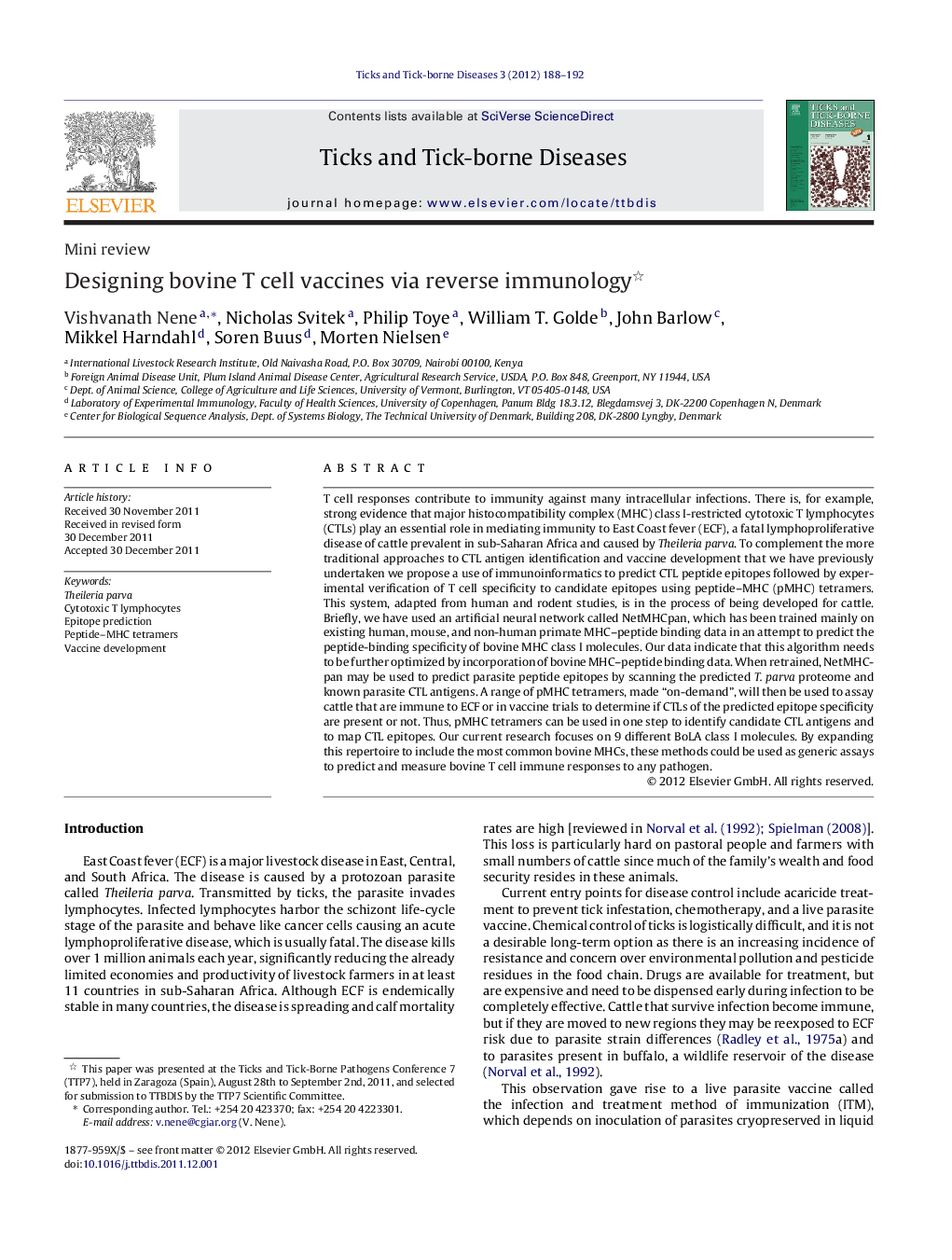| کد مقاله | کد نشریه | سال انتشار | مقاله انگلیسی | نسخه تمام متن |
|---|---|---|---|---|
| 5807293 | 1113120 | 2012 | 5 صفحه PDF | دانلود رایگان |

T cell responses contribute to immunity against many intracellular infections. There is, for example, strong evidence that major histocompatibility complex (MHC) class I-restricted cytotoxic T lymphocytes (CTLs) play an essential role in mediating immunity to East Coast fever (ECF), a fatal lymphoproliferative disease of cattle prevalent in sub-Saharan Africa and caused by Theileria parva. To complement the more traditional approaches to CTL antigen identification and vaccine development that we have previously undertaken we propose a use of immunoinformatics to predict CTL peptide epitopes followed by experimental verification of T cell specificity to candidate epitopes using peptide-MHC (pMHC) tetramers. This system, adapted from human and rodent studies, is in the process of being developed for cattle. Briefly, we have used an artificial neural network called NetMHCpan, which has been trained mainly on existing human, mouse, and non-human primate MHC-peptide binding data in an attempt to predict the peptide-binding specificity of bovine MHC class I molecules. Our data indicate that this algorithm needs to be further optimized by incorporation of bovine MHC-peptide binding data. When retrained, NetMHCpan may be used to predict parasite peptide epitopes by scanning the predicted T. parva proteome and known parasite CTL antigens. A range of pMHC tetramers, made “on-demand”, will then be used to assay cattle that are immune to ECF or in vaccine trials to determine if CTLs of the predicted epitope specificity are present or not. Thus, pMHC tetramers can be used in one step to identify candidate CTL antigens and to map CTL epitopes. Our current research focuses on 9 different BoLA class I molecules. By expanding this repertoire to include the most common bovine MHCs, these methods could be used as generic assays to predict and measure bovine T cell immune responses to any pathogen.
Journal: Ticks and Tick-borne Diseases - Volume 3, Issue 3, June 2012, Pages 188-192